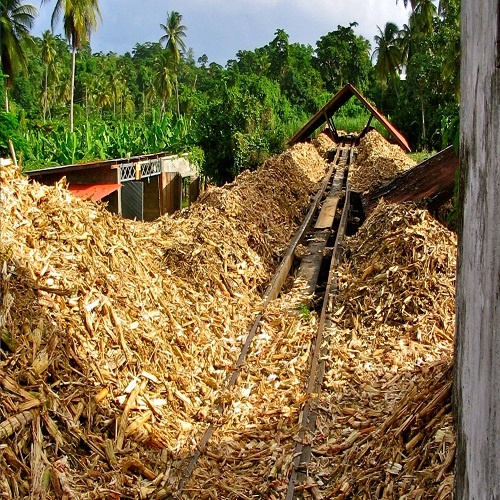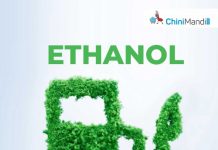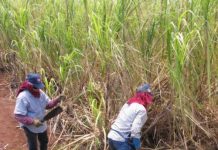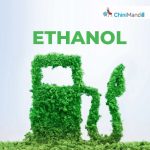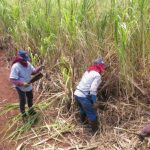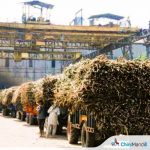As the world grapples with climate change and the need for sustainable agricultural practices, innovative solutions are emerging to address multiple challenges simultaneously. One such solution that has gained significant attention in recent years is biochar – a carbon-rich material produced from biomass through a process called pyrolysis. While biochar can be made from various organic materials, using agricultural waste like sugarcane bagasse offers a particularly promising opportunity to create value from what would otherwise be a disposal problem. In this artcile, we’ll explore the potential of producing biochar from bagasse and its numerous applications and benefits.
What is Biochar?
Before diving into bagasse-specific biochar, let’s start with a clear definition of biochar itself. According to the European Biochar Certificate (EBC), biochar is defined as:
“A porous, carbonaceous material that is produced by pyrolysis of biomass and is applied in such a way that the contained carbon remains stored as a long-term C sink or replaces fossil carbon in industrial manufacturing. It is not made to be burnt for energy generation.”
Key aspects of this definition include:
- Biochar is produced through pyrolysis – heating biomass at temperatures ranging from 350°C to 1000°C in a low-oxygen environment.
- The end product is intended for applications that sequester carbon long-term or replace fossil carbon in industry, not for burning as fuel.
- Biochar is distinguished from other carbonized materials like torrefied biomass or hydrothermal char by its specific production methods, quality characteristics, and intended uses.
Why Bagasse?
Bagasse is the fibrous residue left over after sugarcane stalks are crushed to extract their juice. It is one of the most abundant agricultural byproducts globally, with over 500 million tons produced annually. Traditionally, bagasse has been used as a low-grade fuel in sugar mills or as a raw material for paper production. However, converting bagasse into biochar offers several advantages:
- Waste Valorization: Converting bagasse to biochar creates a value-added product from what is often considered a waste material.
- Renewable Resource: Sugarcane is a fast-growing crop, making bagasse a renewable and sustainable feedstock for biochar production.
- Carbon Sequestration: Biochar production can lock away carbon that would otherwise be released back into the atmosphere through natural decomposition or burning.
- Improved Soil Health: When used as a soil amendment, bagasse biochar can enhance soil fertility, water retention, and microbial activity.
- Reduced Environmental Impact: Proper management of bagasse through biochar production can minimize the environmental issues associated with its disposal or burning.
Production Process
Producing biochar from bagasse involves several key steps:
- Feedstock Preparation: The bagasse must be dried to an appropriate moisture content, typically below 20%. This can often be achieved through natural air-drying or using waste heat from the sugar production process.
- Pyrolysis: The dried bagasse is heated in a low-oxygen environment. The specific temperature and residence time can be adjusted to optimize for desired biochar characteristics. Generally, higher temperatures (>500°C) produce biochars with higher carbon content and surface area, while lower temperatures may retain more nutrients from the original biomass.
- Cooling and Separation: The hot biochar must be cooled in a controlled manner to prevent combustion when exposed to air. This step may also involve separating the solid biochar from any condensable gases or bio-oils produced during pyrolysis.
- Post-Processing: Depending on the intended application, the biochar may undergo additional treatments such as grinding, sieving, or activation to enhance specific properties.
- Quality Control: To ensure consistent quality and safety, the produced biochar should undergo testing for key parameters like carbon content, pH, nutrient levels, and potential contaminants.
Key Properties of Bagasse Biochar
The specific characteristics of bagasse biochar can vary significantly depending on production conditions and the initial state of the bagasse. Recent research has shed light on how pyrolysis temperature and bagasse age affect the resulting biochar properties. Let’s examine some key data:
Fresh and aged bagasse biochar exhibit different properties at various pyrolysis temperatures:
Fresh bagasse biochar:
- Carbon content increases with temperature: 43.07% (350°C), 67.73% (500°C), 68.61% (650°C)
- Fixed carbon content rises: 15.33% (350°C), 62.40% (500°C), 69.86% (650°C)
- Ash content increases: 6.08% (350°C), 17.22% (500°C), 20.24% (650°C)
Aged bagasse biochar:
- Lower carbon content than fresh biochar at all temperatures
- Carbon content increases: 25.75% (350°C), 35.66% (500°C), 43.67% (650°C)
- Fixed carbon content rises: 13.72% (350°C), 31.69% (500°C), 36.59% (650°C)
- Higher ash content than fresh biochar, increasing from 20.30% (350°C) to 50.86% (500°C) and 53.73% (650°C)
These data reveal several important trends:
- Carbon Content: For fresh bagasse, carbon content increases significantly with pyrolysis temperature, from 43.07% in raw bagasse to 68.61% at 650°C. This aligns with our earlier statement that biochar typically contains 60-80% organic carbon. However, aged bagasse shows a different pattern, with lower overall carbon content and a more modest increase with temperature.
- Fixed Carbon: This measure of the stable carbon fraction shows a dramatic increase with pyrolysis temperature, especially for fresh bagasse. At 650°C, fresh bagasse biochar contains 69.86% fixed carbon, indicating high stability and potential for long-term carbon sequestration.
- Ash Content: Ash content increases with pyrolysis temperature for both fresh and aged bagasse. However, aged bagasse has significantly higher ash content overall, reaching over 50% at higher temperatures. This could impact the biochar’s properties and suitable applications.
- Impact of Bagasse Age: The data clearly show that using aged bagasse results in biochar with lower carbon content and higher ash content compared to fresh bagasse. This highlights the importance of feedstock quality and storage conditions in biochar production.
- Optimal Production Temperature: For fresh bagasse, there’s a substantial increase in fixed carbon when moving from 350°C to 500°C, but a smaller gain from 500°C to 650°C. This suggests that temperatures around 500-600°C might offer an optimal balance of carbon content and energy input for many applications.
- Surface Area: High surface area (often 200-400 m2/g) due to its porous structure, which enhances its ability to retain water and nutrients.
- pH: Generally alkaline, with pH values often between 8-10. This can be beneficial for acidic soils but may require careful management in other contexts.
- Nutrient Content: While most nutrients are volatilized during pyrolysis, bagasse biochar often retains significant potassium and some phosphorus, magnesium, and calcium.
- Cation Exchange Capacity (CEC): Moderate to high CEC, which improves its ability to hold and exchange nutrients in soil.
- Water Holding Capacity: Can retain 2-3 times its weight in water, improving soil moisture retention.
These findings have important implications for bagasse biochar production and use:
– Feedstock Management: Using fresh bagasse yields biochar with higher carbon content and lower ash, which is generally preferable for most applications. If bagasse must be stored before pyrolysis, proper storage conditions to minimize degradation are crucial.
– Temperature Selection: The choice of pyrolysis temperature should be based on the intended application. Higher temperatures produce biochar with more stable carbon, which is beneficial for long-term soil carbon sequestration. However, lower temperature biochar may retain more of the original biomass structure and nutrients, which could be advantageous for some agricultural uses.
– Quality Control: Given the significant variability in biochar properties based on production conditions, regular testing and quality control measures are essential to ensure consistent products for specific applications.
– Tailored Production: By carefully controlling feedstock quality and pyrolysis conditions, it’s possible to produce bagasse biochars with a range of properties suited to different end uses – from highly porous materials for filtration to nutrient-rich soil amendments.
Understanding these relationships between feedstock, production conditions, and biochar properties is key to optimizing bagasse biochar production and maximizing its benefits across various applications.
Applications of Bagasse Biochar
The versatility of bagasse biochar lends itself to numerous applications across agriculture, environmental management, and industry:
- Soil Amendment
The most well-known use of biochar is as a soil amendment. When added to soil, bagasse biochar can:
– Improve soil structure and water retention, reducing irrigation needs
– Increase nutrient retention and availability to plants
– Enhance soil microbial activity and diversity
– Reduce soil acidity
– Sequester carbon in a stable form for hundreds to thousands of years
These benefits can lead to increased crop yields, especially in degraded or nutrient-poor soils. However, it’s important to note that biochar effects can vary depending on soil type, climate, and crop species. Proper application rates and integration with other soil management practices are crucial for optimal results.
- Composting Additive
Adding bagasse biochar to compost piles or anaerobic digesters can:
– Reduce nitrogen losses through ammonia volatilization
– Accelerate the composting process
– Improve the final compost quality by increasing nutrient retention
– Reduce odors and greenhouse gas emissions during composting
- Animal Feed Supplement
While not all biochars are suitable for animal consumption, properly produced and certified bagasse biochar can be used as a feed additive for livestock. Potential benefits include:
– Improved feed efficiency and weight gain
– Reduced methane emissions from ruminants
– Toxin adsorption, particularly in cases of mycotoxin contamination
– Enhanced gut health and immune function
It’s crucial to note that any biochar intended for animal feed must meet strict quality and safety standards, such as those outlined in the EBC-Feed certification.
- Water Filtration
The high surface area and adsorptive properties of bagasse biochar make it an effective medium for water filtration. Applications include:
– Removal of organic contaminants from wastewater
– Adsorption of heavy metals from polluted water
– Reduction of nutrient runoff in agricultural settings
– Improvement of soil water retention in green infrastructure like rain gardens
- Industrial Materials
Emerging research is exploring the use of bagasse biochar in various industrial applications:
– As a filler or reinforcement in plastics and rubber compounds
– In construction materials like concrete and asphalt to improve strength and reduce carbon footprint
– As a precursor for activated carbon production
– In electronics, such as supercapacitors or conductive fillers
- Climate Change Mitigation
Beyond its direct applications, the production and use of bagasse biochar can contribute to climate change mitigation through:
– Carbon sequestration in soil or long-lived products
– Reduced emissions from waste management (compared to bagasse decomposition or burning)
– Potential reductions in fertilizer use and associated emissions
– Decreased fuel consumption for tillage due to improved soil structure
Challenges and Considerations
While bagasse biochar offers numerous benefits, there are also challenges and considerations to keep in mind:
- Production Costs: Setting up efficient pyrolysis systems requires significant initial investment. The economic viability depends on factors like bagasse availability, energy costs, and market demand for biochar products.
- Quality Control: Consistent production of high-quality biochar requires careful process control and regular testing. Variability in feedstock properties and production conditions can impact the final product quality.
- Regulatory Framework: The regulatory landscape for biochar varies by country and application. Ensuring compliance with relevant standards (e.g., EBC certifications) is crucial for market access and consumer confidence.
- Potential Contaminants: While bagasse is generally a clean feedstock, care must be taken to avoid contamination during storage and handling. Additionally, the pyrolysis process itself can potentially generate harmful compounds like polycyclic aromatic hydrocarbons (PAHs) if not properly controlled.
- Application Guidance: Optimal use of biochar in agriculture requires education and guidance for farmers. Improper application can lead to suboptimal results or even negative impacts on soil and crops.
- Long-Term Effects: While short-term benefits of biochar are well-documented, more research is needed on its long-term impacts on soil ecosystems and carbon stability over decades to centuries.
Future Outlook
The potential for bagasse biochar is significant, but realizing its full potential will require continued research, development, and scale-up efforts. Some key areas for future focus include:
- Optimized Production: Developing more efficient and cost-effective pyrolysis technologies specifically tailored for bagasse feedstock.
- Customized Products: Creating “designer” biochars with properties optimized for specific applications through control of production conditions and post-processing techniques.
- Co-Products: Exploring the potential of bio-oil and syngas produced during pyrolysis for additional value streams.
- Life Cycle Assessment: Conducting comprehensive analyses to quantify the full environmental and economic impacts of bagasse biochar production and use across different applications.
- Policy Support: Developing supportive policies and incentives to encourage biochar adoption, particularly for its carbon sequestration potential.
- Market Development: Expanding markets for biochar products beyond agriculture, including in environmental remediation, industrial materials, and carbon offset programs.
Conclusion
Biochar production from bagasse represents a promising pathway to transform an abundant agricultural waste into a valuable resource with multiple environmental and economic benefits. By sequestering carbon, improving soil health, reducing waste, and offering diverse applications across sectors, bagasse biochar has the potential to contribute significantly to sustainable development goals.
However, realizing this potential requires a systems approach that considers the entire value chain – from sustainable sugarcane production and efficient bagasse collection to optimized pyrolysis processes and appropriate end-use applications. It also necessitates collaboration between researchers, industry players, policymakers, and end-users to overcome technical, economic, and regulatory challenges.
As we continue to seek solutions to pressing global challenges like climate change, food security, and waste management, bagasse biochar stands out as a technology that can address multiple issues simultaneously. With continued innovation and responsible implementation, it could play a crucial role in building a more sustainable and circular bioeconomy.
By harnessing the power of pyrolysis to transform bagasse into biochar, we’re not just managing waste – we’re creating a valuable resource that can help build healthier soils, cleaner water, and a more stable climate for generations to come. As the sugar industry evolves to meet sustainability challenges, biochar production could become an integral part of a more holistic and regenerative approach to sugarcane cultivation and processing.
Disclaimer: The views and opinions expressed in the article by Dilip Patil, Managing Director of Samarth SSK Ltd., are solely his own.
If you want to read more about the news about the Sugar Industry, continue reading Chinimandi.com

